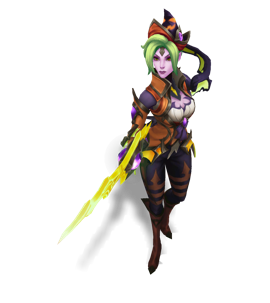The meta in League of Legends is the “most effective tactics available” at any given time. It’s a dynamic set of strategies, champion picks, and item builds that are considered the most reliable way to win. The meta is crucial for players who want to succeed in ranked play or compete at a professional level.
What Shapes the Meta?

The meta is constantly changing due to a number of factors:
- Champion Picks: Certain champions become prominent because of buffs or nerfs in patches, or because they synergize well with a popular strategy. As of August 2025, top laners like Mordekaiser, Darius, and Garen are considered strong choices. In the jungle, champions that apply early-game pressure, such as Rek’Sai and Kha’Zix, are thriving.
- Item Builds: Changes to items—including stat adjustments, cost tweaks, or new additions—can shift the meta. A new item or a buff to an existing one can make a previously weak champion much stronger.
- Patches and Professional Play: Riot Games releases updates every two weeks, which can quickly change which champions are powerful. Additionally, strategies and picks from major tournaments, like the Mid-Season Invitational (MSI) or Worlds, often influence the meta and are adopted by players in solo queue.
- Community Innovation: High-ranking players and streamers sometimes discover “off-meta” picks or strategies that prove to be highly effective, which can eventually become part of the mainstream meta.
Why Does the Meta Matter?
Understanding the meta is important for several reasons:
- Higher Win Potential: Using meta champions and builds gives you a statistical advantage because these options are optimized for the current game environment.
- Team Synergy: A team that picks champions that fit a strong meta composition, such as a “poke” or “hard-engage” team, will have better synergy and a higher chance of winning.
- Adaptability: Staying updated on the meta allows you to avoid using champions or builds that have become less effective due to recent changes, helping you stay ahead of the curve.
Current Meta Snapshot (August 2025)
The current meta is characterized by strong solo laners and influential supports:
- Top Lane: AP champions and classic bruisers like Mordekaiser, Darius, Illaoi, and Garen are currently top-tier.
- Jungle: Early-game pressure and ganking are a priority, making champions like Rek’Sai and Kha’Zix popular choices.
- Mid Lane: Champions with strong burst damage and roaming potential, such as Ahri, Ekko, and Katarina, are very effective.
- Bot Lane: The influence of supports has grown, with high-utility and mage supports like Morgana and Sona being particularly strong. This is reflected in a more limited diversity of ADCs, though Lucian remains a reliable pick.
Written by:
Christian


